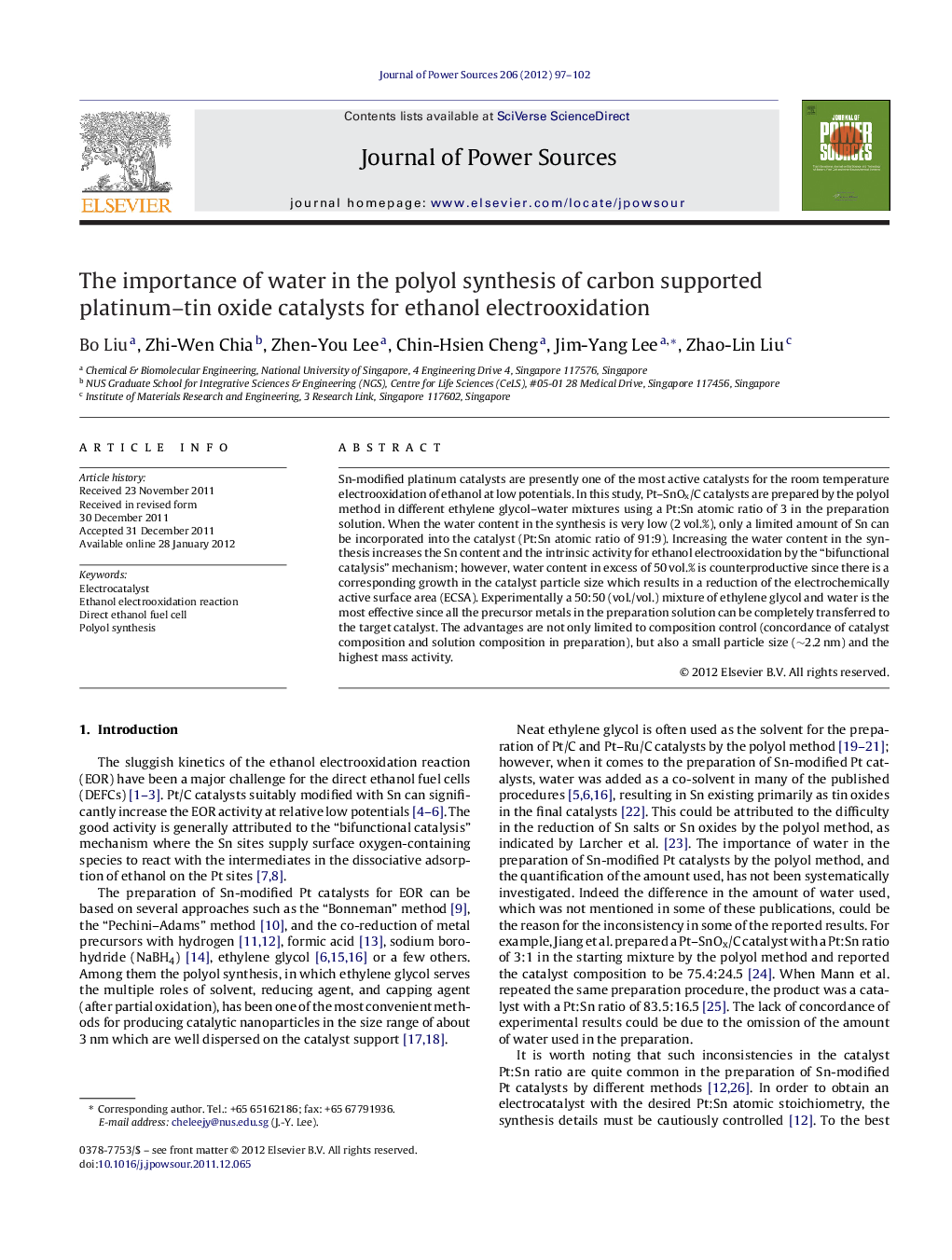| Article ID | Journal | Published Year | Pages | File Type |
|---|---|---|---|---|
| 1293063 | Journal of Power Sources | 2012 | 6 Pages |
Sn-modified platinum catalysts are presently one of the most active catalysts for the room temperature electrooxidation of ethanol at low potentials. In this study, Pt–SnOx/C catalysts are prepared by the polyol method in different ethylene glycol–water mixtures using a Pt:Sn atomic ratio of 3 in the preparation solution. When the water content in the synthesis is very low (2 vol.%), only a limited amount of Sn can be incorporated into the catalyst (Pt:Sn atomic ratio of 91:9). Increasing the water content in the synthesis increases the Sn content and the intrinsic activity for ethanol electrooxidation by the “bifunctional catalysis” mechanism; however, water content in excess of 50 vol.% is counterproductive since there is a corresponding growth in the catalyst particle size which results in a reduction of the electrochemically active surface area (ECSA). Experimentally a 50:50 (vol./vol.) mixture of ethylene glycol and water is the most effective since all the precursor metals in the preparation solution can be completely transferred to the target catalyst. The advantages are not only limited to composition control (concordance of catalyst composition and solution composition in preparation), but also a small particle size (∼2.2 nm) and the highest mass activity.
► Effects of water content in polyol synthesis. ► Concordance of preparation solution composition and catalyst composition. ► Reconciliation of inconsistencies in catalyst preparation.
